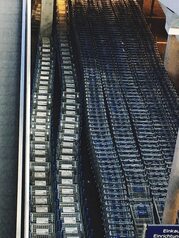The impact of residential supply on real estate appreciation.

The impact of residential supply on real estate appreciation is a crucial topic for those looking to invest in properties. In Costa Rica, where the real estate market is constantly evolving, understanding how supply affects property values can be the key to maximizing your investment. This article will explore the factors that influence appreciation and how decisions regarding residential supply can open or close opportunities for buyers and homeowners.
The relationship between supply and demand in real estate.
The relationship between supply and demand in real estate is fundamental to understanding how property values are determined. When the supply of homes in a certain area is high but demand remains constant or decreases, prices tend to stabilize or even drop. This happens because there are more options available for buyers, giving them greater negotiating power. On the other hand, in situations where demand outstrips supply, such as in areas with accelerated population growth or economic development, prices can increase significantly, creating a favorable environment for real estate appreciation.
Additionally, the quality and characteristics of properties in the market also play a crucial role in this relationship. Well-located properties with attractive amenities tend to attract more interest and can maintain their value even in saturated markets. Investing in improvements or renovations can be an effective strategy to increase both the supply and appeal of a property, helping to maximize its appreciation potential. Therefore, understanding how these factors interact not only allows investors to make informed decisions but also helps them anticipate market trends that could impact their return on investment.
2. Factors that determine residential supply
The residential supply in the real estate market is influenced by a variety of factors that determine its availability and quality. One of the most significant components is consumer demand, which varies based on socioeconomic trends, population growth, and cultural preferences. For example, an increase in the young population may lead to a higher demand for apartments or affordable housing, while growth in the middle class could raise interest in larger family homes. Likewise, geographic location also plays a crucial role; areas with access to services, public transportation, and green spaces tend to see a greater supply to meet the needs of buyers.
Another relevant factor is urban planning regulation and government policies related to urban development. Zoning regulations can limit or encourage the construction of new residential projects, thus affecting the supply in different areas. Additionally, tax incentives or subsidies for builders can stimulate the development of affordable housing, which directly impacts how the value of these properties is perceived in relation to their surroundings. The interaction between these factors not only determines how many properties are available but also their quality and appeal to potential buyers, inevitably influencing real estate appreciation and investment opportunities.
3. How urban development affects property value
Urban development has a significant impact on real estate appreciation, as decisions related to the planning and execution of urban projects can completely transform the value of a property. When new infrastructures, such as roads, schools, and shopping centers, are built, accessibility and quality of life in an area increase, which often leads to a rise in interest from potential buyers. This phenomenon generates greater demand in areas previously considered less desirable, thus raising the prices of existing properties. Therefore, those investing in real estate must consider not only the current state of the market but also the future urban development plans that may influence the environment.
Furthermore, the type of development that is promoted can determine the direction and magnitude of change in property value. Projects aimed at sustainable growth and community well-being tend to attract young families and professionals looking for a place to live long-term. In contrast, poorly planned developments or those that prioritize solely economic profit can lead to market saturation or social problems that deter investment. The interaction between urban trends and housing preferences is crucial to understanding how each new residential offering influences the overall valuation of the area. Therefore, it is essential for investors to stay informed about these aspects before making a real estate acquisition.
4. The role of infrastructure in property value
The value of properties is not only defined by their intrinsic characteristics but also by the quality and availability of the surrounding infrastructure. Roads, public transport, schools, hospitals, and other essential services play a fundamental role in real estate valuation. When an area has good infrastructure, it is more likely to attract potential buyers, which in turn increases demand and, consequently, appreciation. Investing in areas where new infrastructure development is anticipated can be a smart strategy for those looking to maximize their return on investment.
Furthermore, infrastructure not only influences the immediate value of a property; its long-term development can radically transform an area. For example, the construction of a new shopping center or the expansion of a public transport line can revitalize previously neglected neighborhoods. This not only improves the quality of life for current residents but also attracts new inhabitants and businesses to the area. In this context, knowing urban planning and future projects is vital for any investor wishing to anticipate changes in real estate appreciation and make informed decisions about their investment.
5. Market trends: What is the modern buyer looking for?
The modern buyer is increasingly aware of their needs and priorities, which has changed the dynamics of the real estate market. Nowadays, they seek not only a home but a lifestyle that aligns with their values and aspirations. Sustainability, for example, has gained great relevance; buyers prefer properties that incorporate green technologies and responsible building practices. This trend has led developers to innovate in their projects, offering spaces that are not only functional and aesthetically pleasing but also environmentally friendly. As a result, properties that meet these criteria tend to experience a significant increase in their value.
In addition to sustainability, connectivity and accessibility are determining factors for today's buyer. Location remains key, but proximity to services such as efficient public transport, quality schools, and recreational areas is now valued even more. Buyers are looking for neighborhoods that offer a balance between urban and natural environments; spaces that allow them to enjoy community life without sacrificing the convenience of having everything within reach. This shift in preferences is directly influencing how residential offerings are developing: those projects that successfully integrate these elements are seeing a notable increase in their value, as they meet the expectations of the new buyer profile.
6. Analysis of successful cases: Projects that increased their added value
One of the most prominent cases in the analysis of projects that have managed to increase their added value is the development of planned communities in peri-urban areas. These projects, which incorporate green spaces, basic services, and adequate infrastructure, have proven to be highly attractive to families seeking a balance between urban life and the tranquility of the countryside. By offering a safe and accessible environment, these communities have not only elevated their own real estate value but have also contributed to increasing the added value of surrounding properties, generating a positive domino effect throughout the sector.
Another notable example is urban renewal projects in historical or deteriorated areas. The rehabilitation of old buildings and the creation of vibrant commercial spaces can completely revitalize a neighborhood, attracting new residents and businesses. This type of initiative not only improves the aesthetics of the place but also significantly increases the value of adjacent properties. Successful cases in this field demonstrate how a strategic investment in infrastructure and design can transform entire areas, turning them into desirable destinations for both living and investing, which directly translates into a significant increase in real estate appreciation.
7. Strategies for investors: Taking advantage of the current offer
Investment strategies in the current real estate market context are essential to capitalize on the opportunities presented by residential supply. With a constantly changing environment, investors must pay attention to emerging trends in different regions and market segments. Identifying areas with a significant increase in supply can be a sign of future revaluations, especially if infrastructure development or urban improvements are projected. Market research and data analysis on supply and demand are essential tools to anticipate movements and make informed decisions.
In addition, diversifying investments within the real estate sector can offer strategic advantages. For example, betting on properties in areas where supply is increasing in a controlled manner can protect investors against potential declines in other saturated areas. It is also advisable to consider projects that include sustainable or innovative elements that attract the interest of new buyers, as these features often translate into long-term value appreciation. In summary, taking advantage of the current supply requires a proactive and analytical approach to maximize return on investment in a market as dynamic as real estate.



